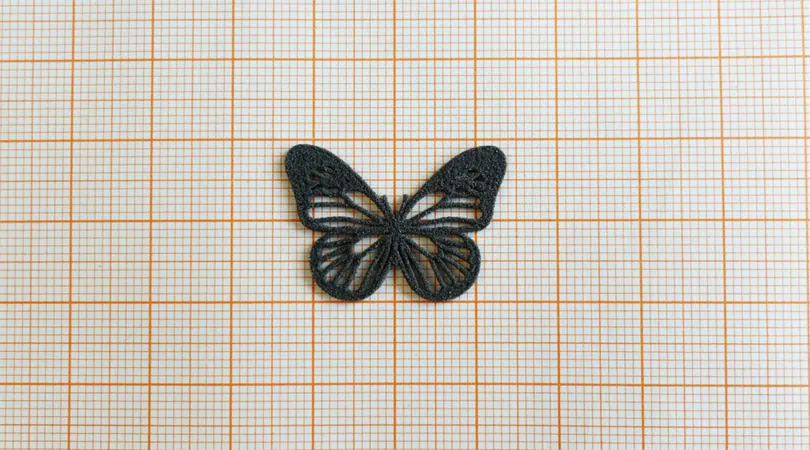
Revolutionary Flying Robots Inspired by Monarch Butterflies Set to Transform Technology!
2025-01-09
Author: Sarah
Revolutionary Flying Robots Inspired by Monarch Butterflies Set to Transform Technology!
Scientists across the globe are making significant strides in the world of robotics, creating flying robots that take cues from the incredible monarch butterfly. These innovative robots employ magnetic fields instead of traditional bulky electronic components or batteries, allowing them to mimic the graceful movements of butterflies in flight.
Muhammad Khan, a researcher from the Technical University of Darmstadt in Germany, highlighted the profound impact of monarch butterflies on their design. “Monarch butterflies’ remarkable migratory abilities and their highly efficient, adaptable wing structures inspired our design.” Known for embarking on a breathtaking journey from Canada to Mexico every year, monarchs have fascinated scientists with their endurance and navigation skills.
The lightweight and flexible design of butterfly wings allows these creatures to cover vast distances with minimal energy expenditure—an evolutionary marvel that researchers sought to replicate. By creating flying robots with similar features, the potential exists for innovations in various fields, from environmental monitoring to search-and-rescue operations and beyond.
Transforming Flight Efficiency with Nature's Design
To create these magnetic butterfly robots, researchers embedded magnetic particles into flexible materials, allowing the wings to react dynamically to magnetic fields. “The wings are made from a magnetic composite material that responds to external magnetic fields,” explained Kilian Schäfer, co-author of the study. “When a magnetic field is applied, the embedded magnetic particles cause the wings to bend or deform, mimicking the movement of real butterfly wings.”
Utilizing cutting-edge 3D printing technology, twelve different wing designs were created, tested, and iterated upon. Researchers incorporated vein patterns found in natural butterfly wings, contributing to enhanced performance and adaptability in flight. Their findings indicated that larger wings—around 28 mm in length—were less stiff, offering increased flexibility during movement.
The Quest for the Perfect Design
One of the primary challenges faced by scientists was achieving the delicate balance of thin, flexible structures with functional vein patterns, all while maintaining durability. "The biggest challenge was fabricating thin, flexible structures with embedded vein patterns that were still functional while being less than a millimeter thick,” Schäfer added. This necessitated fine-tuning the 3D printing process to achieve the ideal mechanical properties.
Because these robotic designs revolve around magnetic technology, they can achieve unparalleled levels of miniaturization and reduced weight when compared to traditional flying devices. This innovation opens doors to advanced applications in various sectors, including biomedical devices and environmental studies.
A Vision for the Future
While researchers have primarily focused on a singular wing movement mimicking that of monarch butterflies, the journey doesn’t end here. Future experiments aim to explore a spectrum of wing movements necessary for complex flight maneuvers. There's immense excitement surrounding the prospect of integrating more compact magnetic field generators, potentially enabling the robots to operate autonomously without human intervention.
Khan emphasized the wider implications of their work, stating, “We aim to apply these bioinspired principles to other shape-morphing robotic systems, particularly in applications requiring high adaptability and efficiency.” With continued innovation in robotic design and function, the future appears bright for technology inspired by nature, unlocking possibilities once thought to be the stuff of science fiction.
Stay tuned for more updates on how these butterfly-inspired robots could revolutionize technology in ways we never thought possible!

 Brasil (PT)
Brasil (PT)
 Canada (EN)
Canada (EN)
 Chile (ES)
Chile (ES)
 Česko (CS)
Česko (CS)
 대한민국 (KO)
대한민국 (KO)
 España (ES)
España (ES)
 France (FR)
France (FR)
 Hong Kong (EN)
Hong Kong (EN)
 Italia (IT)
Italia (IT)
 日本 (JA)
日本 (JA)
 Magyarország (HU)
Magyarország (HU)
 Norge (NO)
Norge (NO)
 Polska (PL)
Polska (PL)
 Schweiz (DE)
Schweiz (DE)
 Singapore (EN)
Singapore (EN)
 Sverige (SV)
Sverige (SV)
 Suomi (FI)
Suomi (FI)
 Türkiye (TR)
Türkiye (TR)
 الإمارات العربية المتحدة (AR)
الإمارات العربية المتحدة (AR)